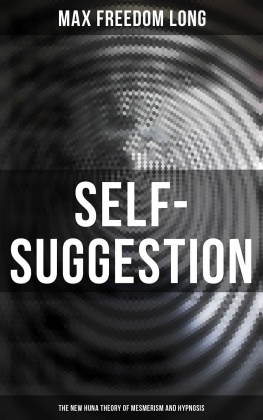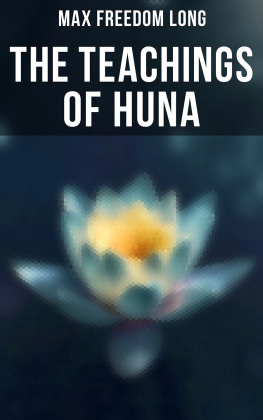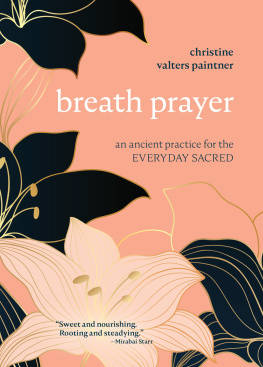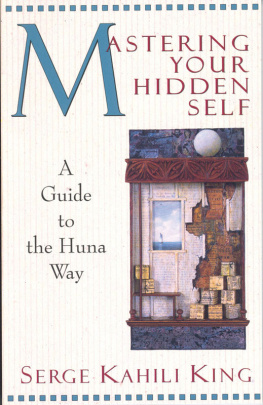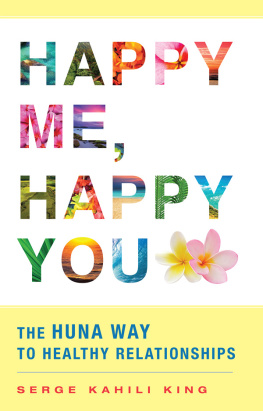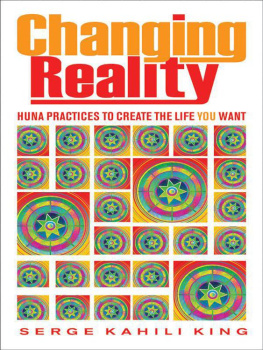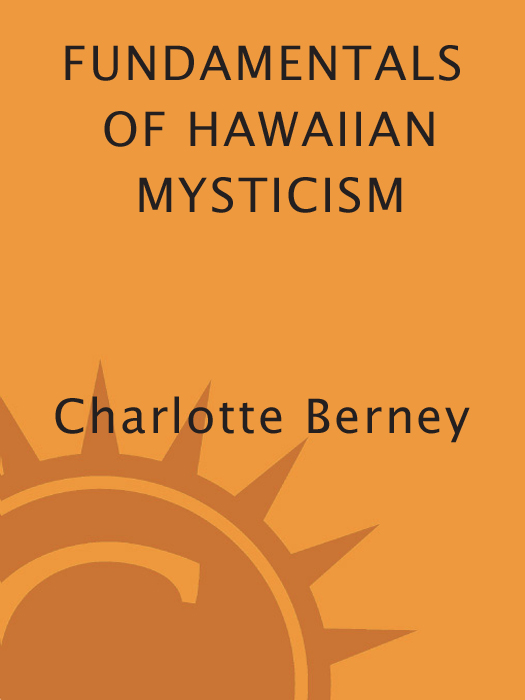Copyright 2000 by Charlotte Berney
All rights reserved. Published in the United States by Crossing Press, an imprint of the Crown Publishing Group, a division of Random House, Inc., New York.
www.crownpublishing.com
www.tenspeed.com
Crossing Press and the Crossing Press colophon are registered trademarks of Random House, Inc.
Library of Congress Cataloging-in-Publication Data
Berney, Charlotte.
Fundamentals of Hawaiian mysticism / Charlotte Berney.
p. cm.
Includes bibliographical references.
1. Huna I. Title
BF1623.H85 B47 2000
299.9242dc21 99-088516
eISBN: 978-0-307-81539-2
v3.1
This book is dedicated to my teachers, Josephine and Jack Gray,
who gave me Hunathe gift of a lifetime; to my wonderful parents,
Helen and Elvin Daigle and to my beloved husband, Carl.
Acknowledgments
I would like to acknowledge Marcia Noren, the catalyst for this book, as well as those who gave me valuable assistance by commenting on the manuscript: Jeanie Forte, Carl Berney, E. Otha Wingo, and John Bainbridge. Thanks also to the members of Huna Research I have known and worked with over the years and with whom I have exchanged much Huna information. I count many of them as close friends. Mahalo to Kawehilani Lucas, my Hawaiian language teacher; to all the teachers in Hawaii, past and present, who help others through their work; and to Serge King for his dedication to making Hawaiian knowledge available. I would like to express my appreciation of Herb Kawainui Kane for his paintings, books, and expertise that have added so much to our knowledge of historical Hawaii. Finally, mahalo nui loa to the Hawaiian people whose spirit of aloha is the inspiration for this book.
Contents
Foreword
The mysterious, the exotic, the apocalyptic, the inexplicable, the enigmatic, the ineffable, the secretive, the occult (hidden), the cryptic, and the mystical have fascinated mankind from time immemorial. The Eleusinian Mysteries of the Greeks and the Mithraic Mysteries of the Persians were established institutions in those societies. Intimations of dark and forbidden rites abounded to excite the emotions and imagination of the masses and to elicit vague fears about practices unknown and misunderstood. In our own era, irrational End Times televangelists, newsmongers, and movies fan these emotions into panic. Some people are attracted to anything that appears strange and exotic.
In the midst of such confusion and disorder in other parts of the world, there existed the quietly powerful, natural, balanced, and practical system of Hawaiian mysticism that was a way of life for the Hawaiians and other Polynesians. It required neither belief nor speculative theories. It was an experience involving emotion, rational intelligence, and the divine, as integral parts of each person. It was characterized by a balanced view of body, soul, and spirit that considered all things natural, not sacred, which implies that some things were separated from everyday life. There was not the mystical union often associated with mysticism. The experience was direct communication at every level, including the divine. Higher powers were recognized, and there was ready communication with them through their own divine nature. Although Hawaii has long been considered exotic and mysterious, the manner of living was natural and unpretentious for a setting so paradisiacal. When the influx of foreign cultures brought drastic changes to the entire society, Hawaiian mysticism had to be practiced in secret.
When Max Freedom Long went to Hawaii as a teacher in 1917, the secrets were all but lost. Stories about fantastic feats of the ancient practitioners, the kahuna, so intrigued him that he spent the next fifty-two years researching their practices. This synthesized system, gleaned from Hawaiian sources and concepts combined with his own knowledge and experiences, he named Huna, from the word in the Hawaiian language meaning secret or private family wisdom. Long clearly stated that the Huna principles, which he published as a practical system for all to use, were not synonymous with the traditional religious practices of the ancient Hawaiians. The Huna system is based on principles recovered from those practices and given universal expression. They are not based on belief, but on experience. Those who practice Huna prove the principles in their own experience.
The author of this very excellent book makes the Huna methods easy and natural, fitting them into their proper Hawaiian setting and yet so smoothly leading you to see how applicable Huna is to your own life here and now. You will find here an impressive array of specific methods and techniques, with clear instructions, which you can use immediately or at any time you need them. I find it particularly encouraging to know that every technique described in this book has been proved by the author in her own experience.
You will find that Huna is a mystical practice that you can use every day with full awareness of every part of your beingemotional, rational, and spiritualand never have to keep secret.
E. Otha Wingo, Ph.D.
Preface
I arrived in Honolulu late at night. It was too dark for first impressions, and so, after the ride from the airport, I checked into my hotel and went right to sleep. The next morning I woke up early and headed for the lanai to see what I could see. From high up in the Rainbow Tower on Waikiki, the view of Diamond Head was magnificent. I was filled with emotion and an overwhelming feeling that I was home.
The business trip in 1980 that brought me to Hawaii for the first time was the start of a new life for me. I knew without being told that beneath the faade of tourist Hawaii lay a deep and rich culture. Back in California, I began a personal study of the history and traditions of Hawaii, reading everything I could find. When I saw a flyer for classes in Hawaiian Huna, I immediately called to inquire about them.
Josephine and Jack Gray taught a series of popular Huna classes in San Francisco based on their training with a teacher in Hawaii and amplified by their own metaphysical work. Like many who are drawn to things spiritual, they had explored other traditions before discovering Huna. (I had at different times in my life delved into Yoga, Tibetan Buddhism, and Orthodox Christianity.) The Grays believed Huna to be an imminently practical form of spiritualitya way to bring mystical ideas into everyday life. They taught it to others with great enthusiasm and dedication for many years.
The Grays teachings provided a good base of Huna training, and I went on to study with other teachers in Hawaii and on the mainland. I joined Huna Research Inc., the organization created by Max Freedom Long; attended their seminars; and met regularly with a group of Huna students in the San Francisco Bay Area. For several fun-filled years, I was a member of a Hawaiian club that held luaus and hula festivals and provided instruction in Hawaiian language, crafts, chanting, dance, and music.
During this time, I made frequent trips to Hawaii, exploring all the islands. I had always felt especially drawn to the Big Island and eventually bought a house in the Waikoloa area. I became part owner of land near the Puna Cave, a sacred site, and was profoundly affected by this marvel. Since that first fateful trip, Hawaii has never ceased to be my spiritual home, and my love and respect for the Hawaiian people and their amazing culture remain stronger than ever.


